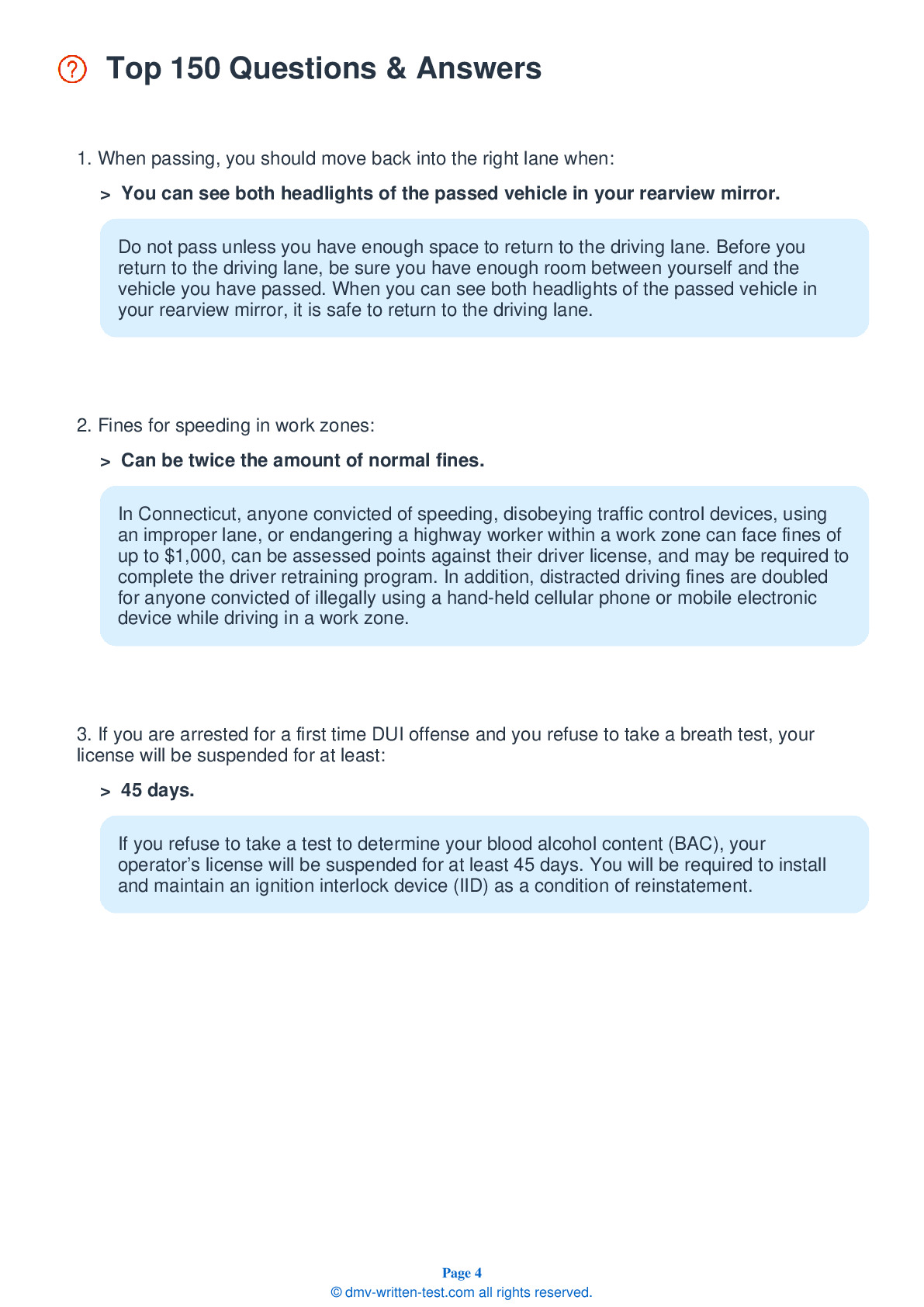2025 Connecticut Permit Test 11
The following questions are from real DMV written tests. These are some of the actual permit questions you will face in Connecticut. Each permit practice test question has three answer choices. Select one answer for each question and select "grade this section." You can find this button at the bottom of the drivers license quiz. For a complete list of questions and answers for Connecticut please visit https://cheat-sheets.dmv-written-test.com/en/connecticut/car.
Number of Tests
Number of Question
Passing Score
9. If your vehicle begins to skid, you should:
Explanation
If your vehicle begins to skid, release the accelerator or brake pedal to regain vehicle balance. Steer in the direction of the skid to regain control of the vehicle.
10. Where is it safe to pass another vehicle?
Explanation
Never pass within intersections or at other intersecting points, such as parking lot entrances and alleyways. Any time your view is blocked by a curve or a hill, you should stay in your lane and assume that there is an oncoming vehicle just out of sight. Wherever signs and/or pavement markings permit passing other vehicles, you will have to determine whether or not you have enough space to pass in a safe manner.
11. When passing on the left of a vehicle, it is safe to move back into the right lane:
Explanation
When passing another vehicle on its left, you may move back into the right lane when the headlights of the passed vehicle can be seen in your rearview mirror. Always signal before changing lanes.
12. Allow extra space in front of your vehicle when following a:
Explanation
Allow for extra space when driving behind a motorcycle. Motorcycles can stop more quickly than other vehicles can and you must have adequate room to stop if the motorcyclist brakes or falls off. Also, remember that motorcycles are difficult to see at night because they only have one tail light.
13. "No zones" are areas around trucks where cars:
Explanation
"No zones" are areas around trucks or buses in which cars disappear into the larger vehicle's blind spots. "No zones" can also be defined as areas in which cars are so close to the larger vehicle that they restrict the truck or bus driver’s ability to stop and maneuver safely. A car being in a "No zone" greatly increases the potential for a crash.
14. On a freeway, you should look farther ahead than you would on a city street:
Explanation
On the freeway, be ready for changes in traffic conditions. Watch for signals from other drivers. Expect merging vehicles at on-ramps and interchanges and be prepared for rapid changes in road conditions and traffic flow.
15. If you want to pass a pedestrian who is walking along the roadway and an oncoming vehicle is approaching, you should:
Explanation
If possible, try to only deal with one roadway hazard at a time. If you want to pass a pedestrian but an oncoming vehicle is approaching, slow down and let the vehicle pass. You may then pass the pedestrian if it is safe to do so.
16. This red and white sign means you should:

Explanation




